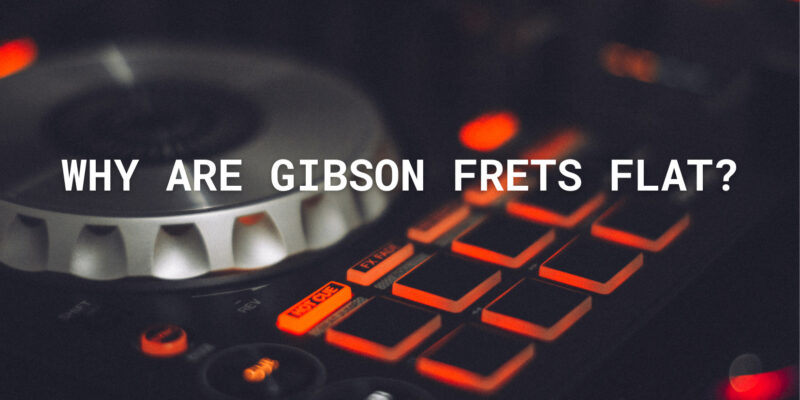Gibson guitars are renowned for their distinctive design elements, each contributing to the instrument’s unique character and tonal qualities. One such characteristic that sets Gibson apart from other guitar manufacturers is the use of flat frets. In this article, we’ll explore the reasons behind Gibson’s choice of flat frets, the impact they have on playability and tone, and why this feature has become a signature aspect of Gibson instruments.
Flat Frets: What Are They?
Flat frets, sometimes referred to as “low profile” or “wide flat” frets, are a specific type of fretwire used on Gibson guitars. Unlike taller or more rounded fret profiles found on some other guitars, flat frets are characterized by their low height and a relatively wide, flat crown. These frets are known for providing a unique playing experience and tonal characteristics.
Historical Significance
The use of flat frets on Gibson guitars has a rich historical foundation. It dates back to the early 20th century when Orville Gibson and later Lloyd Loar laid the groundwork for the design of iconic Gibson models such as the L-5, ES-150, and the famed Les Paul.
The choice of flat frets during this era was influenced by several factors:
- Traditional Craftsmanship: The early Gibson instruments were crafted using traditional techniques, including fretwork. Flat frets were consistent with the manufacturing practices of the time.
- Tonal Objectives: Gibson’s goal was to create guitars with a warm, resonant tone that could excel in jazz, blues, and other genres. Flat frets contributed to the desired tonal qualities, with a focus on smooth, singing sustain.
- Player Comfort: Flat frets provided a comfortable playing experience for fingerstyle and chord-based playing, which was prevalent in the genres Gibson guitars were intended for.
Impact on Playability and Tone
Flat frets have several notable effects on Gibson guitars:
- Smooth Bending: The lower height of flat frets allows for smoother string bending, making it easier for players to execute expressive techniques like bends and vibrato.
- Warm Sustain: The design of flat frets, combined with the materials used in Gibson guitars, contributes to a warm and resonant sustain. This tonal characteristic is particularly prized in genres like jazz and blues.
- Comfortable Chording: The flat profile of the frets offers comfort for players who frequently engage in chord-based playing and fingerstyle techniques.
- Signature Sound: The combination of flat frets, quality tonewoods, and Gibson’s construction methods has led to the creation of a distinctive Gibson sound that is instantly recognizable.
Continued Tradition
Today, Gibson continues to use flat frets as part of its commitment to preserving the legacy of its classic guitar designs. While some modern Gibson models may offer variations in fret profiles to cater to different playing styles, flat frets remain an integral part of the Gibson tradition.
In conclusion, the use of flat frets on Gibson guitars is deeply rooted in history, craftsmanship, and tonal objectives. These frets contribute to the iconic sound and feel of Gibson instruments, making them a unique and cherished choice for guitarists in various genres. Gibson’s commitment to flat frets is a testament to the enduring legacy of their classic guitar designs.


